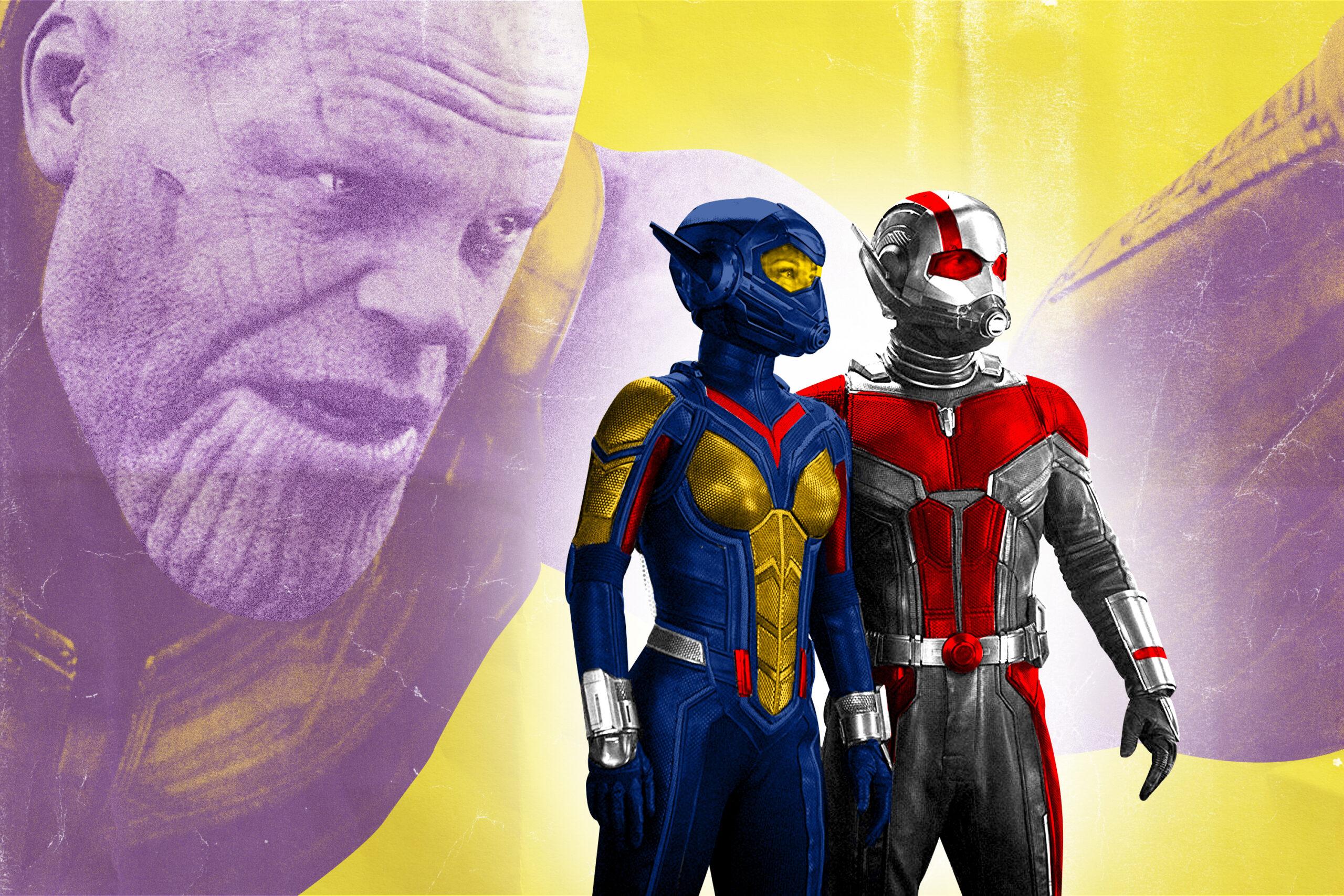

The explosion of the Marvel Cinematic Universe means a greater opportunity for variety. There’s no better example of that than the three Marvel movies that have been released this year. Black Panther was a stand-alone film with scant ties to the MCU at large, instead opting for afrofuturist undertones and cinematic refinement under director Ryan Coogler. Avengers: Infinity War was a record-breaking crossover event years in the making, featuring dozens of Marvel heroes and ending with an almost certainly reversible rapture-like event. Now, this weekend signals the release of Ant-Man and the Wasp, which carries with it much smaller stakes—no pun intended.
That’s the inherent appeal of the Ant-Man franchise: It’s literally about the little guy, a character who doesn’t fit with the self-serious vibes or apocalyptic stakes of other Marvel movies. One of the best parts of the movie is a tiny moment, when Laurence Fishburne’s Bill Foster, who has just captured Ant-Man, the Wasp, and Hank Pym, allows Ant-Man to answer his daughter’s FaceTime call because it might be an emergency (turns out, she just couldn’t find her soccer cleats). Ant-Man and the Wasp’s strength lies in its willingness to not take anything too seriously, which makes it a nice palate cleanser after the doom and gloom of Infinity War’s ending.
But yeah, about that. Most people who see Ant-Man and the Wasp probably saw Infinity War go full Leftovers on its superhero cast, vaporizing half of them after Thanos collected all of the Infinity Stones. Though Ant-Man and the Wasp is unmistakably a small-scale movie, going into its release there was a widely held expectation that the movie would at least tangentially address the elephant in the room—before the elephant disintegrated into a pile of ashes. But the weird thing about Ant-Man and the Wasp—which, noticeably, doesn’t feature any cameos from other Marvel heroes—is that it could ostensibly exist anywhere on the MCU schedule. It takes place after Captain America: Civil War, while Ant-Man is under house arrest following his involvement in that illegal superhero scuffle. That’s about as much mention of the larger story that we get in Ant-Man and the Wasp—at least until the end-credits scene, which gives you the feeling that the architects of the MCU were like, “Riiiight, we need to do something related to that whole rapture business from a few months ago.”
So, instead of happily ever after for Scott Lang (a.k.a. Ant-Man), Hope (a.k.a. the Wasp), Hank Pym, and his newly rescued wife, Janet van Dyne, some of them vanish! Just as Scott goes back into the quantum realm for a short amount of time to collect some particles, his gateway back to the real world via Hope, Hank, and Janet is cut off because they’ve been Thanos’d. It’s unclear if Scott was exempt from Thanos’s finger-snapping mayhem because he was part of the lucky half who randomly survived the rapture, or because he was in the quantum realm. (It’s probably the latter, since the quantum realm has been explained as a place where all constructs of time and space become meaningless.) And that question—and very slight nod to the Avengers end game—is all we’re left with. In the spirit of the movie’s jovial tone, the last thing we see after a second end-credits scene featuring a giant, drumming ant is some text hitting the screen: “Ant-Man and the Wasp will return,” before a question mark fades into view after the word “return.”
That means going into next year’s Infinity War sequel, Ant-Man is trapped in the quantum realm, Captain Marvel has been called into action via Nick Fury’s last-minute Hail Mary, and … we still don’t know what Hawkeye’s up to. That’s it. After Ant-Man and the Wasp, there is no scenario that Marvel fans haven’t already discussed: One prevailing theory is that the quantum realm can be utilized to stop what Thanos hath wrought since it deals with psychics and potential multiverses, but any solution would probably require getting Ant-Man some help. That’s probably where Captain Marvel and her stand-alone movie (which, a quick reminder, will be set in the ’90s) come in, but again, we can’t know for sure.
Practically speaking, this is probably the closest the MCU will ever get to a state of uncertainty. Even with the quantum realm as a starting point, there’s no telling what’s in store for the Infinity War sequel. Instead of using Ant-Man and the Wasp to provide answers, Marvel has kept the future of its cinematic universe in relative stasis; fans are free to speculate. We do know that Marvel’s Phase 4 will feature many of the vanished heroes, so it’s not like anyone really anticipates a future in which the likes of Spider-Man and Black Panther are gone for good. But the mystery and intrigue come from the MCU’s impending, ambiguous journey to its next stage, rather than the destination, and that’s entertaining in its own right.
Infinity War was an apocalyptic inflection point in the Marvel narrative, and while some fans might wish they could just fast-forward to its sequel and see how everything plays out, Ant-Man and the Wasp is a worthy salve. What it lacks in clear-cut, Thanos-related solutions, it makes up for with unabashed silliness. It is the ideal summer blockbuster to clear your head, and a sneaky good setup for what’s to come. Because in the Infinity War interim, the best thing the MCU can do is let the mystery be.

